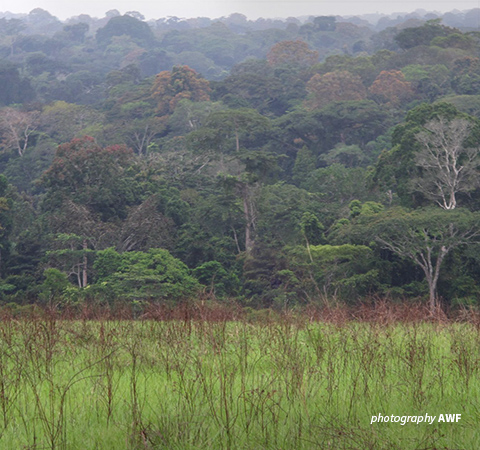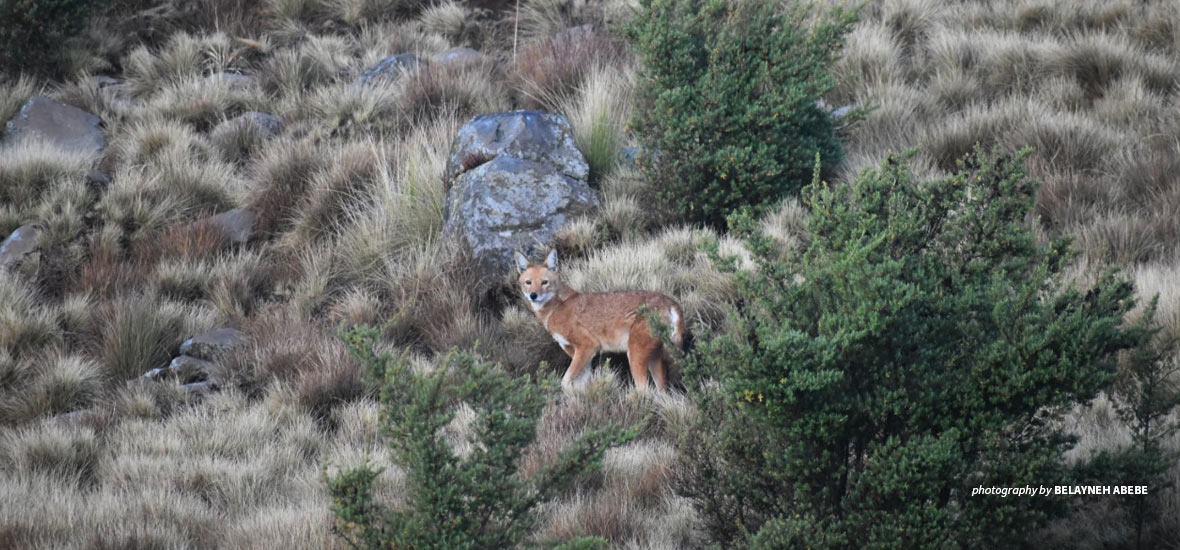World Heritage Day 2023: Celebrating Africa’s rich natural history

Mana Pools National Park in Zimbabwe is recognized as a UNESCO World Heritage Site for its biodiversity
African Wildlife Foundation (AWF) works in Africa’s most biodiverse regions, conserving endangered wildlife and essential ecosystems. Some of these sites are recognized by the U.N. Educational, Scientific and Cultural Organization (UNESCO) for their immense ecological value. In honor of World Heritage Day, celebrated annually on April 18, AWF explores three World Heritage Sites in Cameroon, Ethiopia, and Zimbabwe, where we work with local groups and wildlife authorities to maintain the integrity of protected areas.
Dja Faunal Reserve, Cameroon
As a World Heritage Site, the Dja Faunal Reserve is of Outstanding Universal Value to Humanity, as ascribed by UNESCO. With a triple status of Faunal Reserve, Biosphere Reserve, and World Heritage, the Dja remains one of Africa’s largest and best-protected rainforests. This 5,260 sq. kilometer reserve is located near Cameroon’s borders with Gabon and the Republic of the Congo.

The tropical rainforests of Dja are home to critically endangered forest elephants
The Dja Faunal Reserve is also the last major intact tropical forest in Cameroon and the last bastion for the survival of forest elephants in Cameroon. Apart from Gabon, Dja is where you will find a large number of forest elephants in the Congo Basin, particularly after the ecosystem lost over 200,000 forest elephants in the past 20 years. The Dja not only serves as habitat to unique wildlife species and flora, but equally to the longest-surviving group of forest people in Cameroon’s history, the Baka indigenous pygmies who are believed to be the original inhabitants of the reserve, long before it was declared a Heritage Site.
Oum Gilbert, Conservator of the protected area, said that AWF’s trainings on rights-based conservation have nurtured harmony between local communities and the wildlife agency. He said, “We have adopted a people-centered approach where all local and indigenous populations contribute to biodiversity conservation in the landscape.”
Mana Pools National Park, Zimbabwe
Inscribed as a World Heritage Site along with the contiguous protected areas Sapi Safari Area and Chewore Safari Area, Mana Pools National Park is also a RAMSAR wetland of international importance. The protected area encompasses the middle portion of the Zambezi River, and the pools were once channels of the mighty river, which forms a natural border between Zimbabwe and Zambia. Home to large mammals such as hippos and elephants, the Mana Pools ecosystems also provide refuge to thousands of resident and migratory bird species and unique aquatic life.
However, the rich biodiversity of the landscape is under constant threat of poaching and habitat degradation from climate change and human activity in the transboundary zones. AWF’s support in Mana Pools National Park involves robust anti-poaching strategies in partnership with the Zimbabwe Parks and Wildlife Management Authority and supporting community wildlife scouts to become conservation champions.
AWF’s Technical Advisor in the protected area, Simon Muchatibaya, noted that restoring the Mid-Zambezi Valley is critical for tourism. “We used to have black and white rhinos in Mana Pools, and many visitors used to love seeing these animals. Now they are no longer there, so what I am aiming to do with AWF is to make sure that we protect the natural resources and reduce the poaching instances so that the authorities in Zimbabwe will become confident in us and even ask us to re-introduce these two species in Mana Pools,” he said.
Simien Mountains National Park, Ethiopia
With stunning vistas of the Simien Mountains and the country’s highest peak Ras Dashen, the largest national park in Ethiopia was one of the first UNESCO World Heritage Sites. Apart from its remarkable geography, the Simien Mountains National Park is home to wildlife found only in the afro-alpine highlands of northern Ethiopia — the gelada monkey, Walia ibex, and the Ethiopian wolf.

The Ethiopian wolf is critically endangered and found only in the Simien Mountains National Park, a UNESCO World Heritage Site
Due to dramatic population declines, the Simien Mountains National Park was listed as a World Heritage Site in Danger in 1994. Although it was removed from the listing in 2017, wildlife populations are still vulnerable. According to the Ethiopian Wildlife Conservation Authority (EWCA), less than 500 Ethiopian wolves are left. However, there is some hope for this critically endangered species — in early 2023, a wildlife monitoring team comprising ecologists from AWF, EWCA, and the Ethiopian Wolf Conservation Project found three Ethiopian wolf pups during a survey.
Besides assisting the wildlife authority in protected area management, AWF works closely with local groups to mitigate habitat loss. Recently, local communities have helped restore degraded areas of the park as laborers. AWF Landscape Director Brian May said, “Coupled with our awareness-building campaigns, the cash-for-work and livelihood restoration programs help communities see the benefits of adopting new practices that maintain the Simien Mountains National Park rather than depending solely on tourism or grazing livestock in the protected area.”
> Learn how AWF conserves the critically endangered Ethiopian wolf in the Simien Mountains
Noella Ngunyam contributed to this article